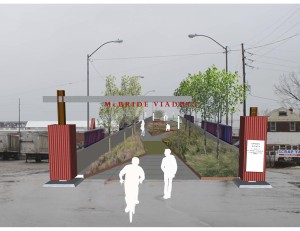On Saturday, April 12 from 3-‐5pm at Frontier Park’s LEAF building, Civitas is hosting a free event to showcase the community organizations they have co-‐founded as well as the vital projects of these various groups. A display table format will allow the public to talk directly with organizers:
ALL ABOARD ERIE. Julie Minich and Brian Pitzer will discuss efforts to improve rail and bus service, and will unveil the conceptual model for a Pennsylvania Higher Education Road Network (PHERN). PHERN proposes to link colleges and universities through direct, frequent bus routes to foster collaboration between higher education faculty and their 20,000 students.
INNOVATION ERIE David Willoughby, Jonathan D’Silva and Eric Dahl will encourage attendees to consider submitting “good ideas” for new products to the Innovation Erie entrepreneurial contest by the May 14th deadline. The grand prize is $2,000 in cash and thousands more in professional services including legal advice, marketing help, manufacturing guidance and rapid prototyping.
MADE IN ERIE MARKETPLACE Last year’s inaugural Green Friday Made in Erie Marketplace generated $5,000 in income for Greater Erie entrepreneurs selling locally produced music, food and crafts. Organizer Stephanie Westley will be present on April 12th to discuss the next MADE IN ERIE marketplace event planned for the Masonic Temple’s Camelot Room on Nov. 28, 2014.
PRESERVATION ERIE Melinda Meyer, Eric Dahlstrand, Gail Corwin, Julia Nene, Cameron Robertson will discuss the on-‐going inventory of historic properties and sell membership tickets to the Greater Erie Awards night to be held May 1 at the Masonic Temple Ballroom in honor of the YMCA, Kraus Dept. Store and the Remnant Shop. The May 1 keynote presentation will be made by Ed McMahon of the Urban Land Institute in Washington, D.C.
RETHINK THE MCBRIDE VIADUCT Adam J. Trott and Michael Beightol will outline the rationale for using the proposed 1.2 million demolition funds to repurpose the East Avenue viaduct. No longer viable to support dozens of 22-‐ton trucks crossing over the CSX and Norfolk-‐Southern rail lines, the McBride Viaduct is still open to pedestrians and bicyclists. With work, the Viaduct can become an attractive path and park telling the story of the neighborhood and fostering East Side investment and redevelopment.
SAVE THE VILLA CHAPEL Barbara Crone, Audra Alexandra, Sue Moyer and Sheila Murray will outline the nine years of efforts to save the landmark chapel at 9th and Plum including fundraising, creating a website, fixing the roof and funding reuse plans. Flyers about the April 20th Easter event will be available.
A collaborative “think tank” founded in 2004, Civitas has worked to creatively catalyze grass-‐ root action in support of Greater Erie. Co-‐founded by Edinboro University of PA art professor Lisa Austin, self-‐taught urban critic Stephen Sonnenberg and organizer Laurel Swartz, Civitas has grown to include art historian Lindsey Gearhart and landscape architect Michael Beightol. The mission of the group is to undertake “aesthetic and functional interventions in public space” and has included work in urban design, zoning, preservation, transportation and economic development.

